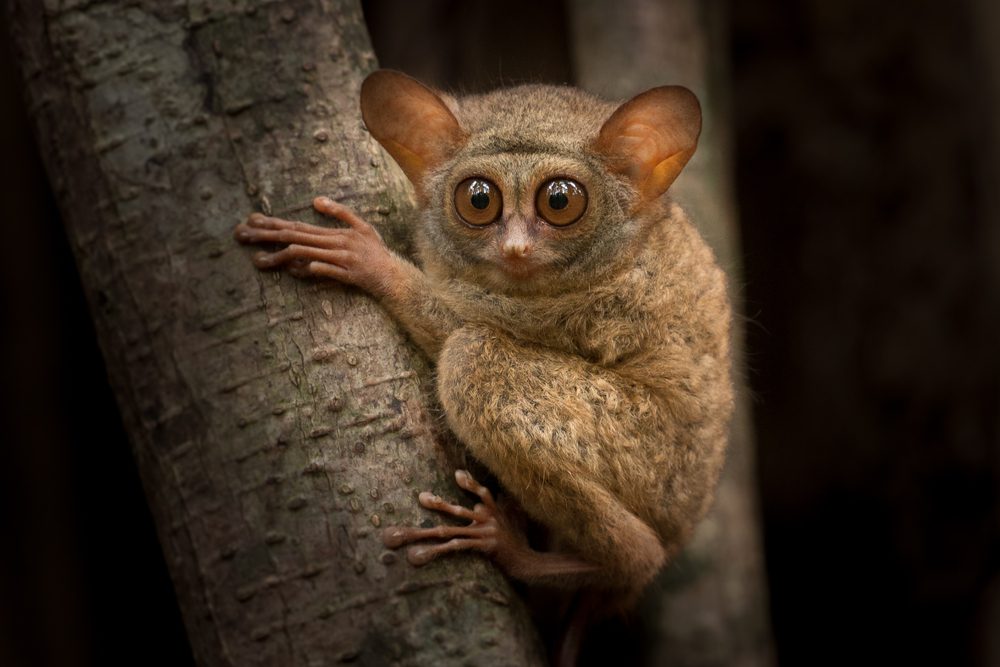
1. Tarsiers
These tiny primates might look cuddly and cute, but don’t be fooled. You can find these small animals on the islands of South-East Asia, but make sure to watch them from far away.
The reason being is that they can bite really hard with their strong teeth. Even though they might seem harmless, they are the only primates known as being completely carnivorous.
When it’s time to eat, they wait completely motionless on trees, watching the prey with their gigantic eyes. When the food is positioned, they jump on it in order to kill it.
After that, they hold it still with their strong hands and bite into it with their sharp teeth. Their diet consists of lizards, insects, bats, snakes, and birds.
2. Deep-sea Anglerfish
The deep-sea anglerfish is not just an ugly fish, but also a dangerous one. It can be found in the depths of the Antarctic and Atlantic oceans and it can reach up to 3.28 feet in length.
Besides being massive, it also has a gigantic head and a mouth that is full of teeth. Their bodies are so flexible that they can eat food that is twice their own size.
3. Bombardier Beetle
Even though bombardier beetles might seem small and harmless, they have a secret weapon they use when they think that they are in danger. They emit a strong gas that can range from slow secretions to fast bursts. The substance is very hot and it can lead to burns and stains on human skin.
The substance they secrete helps them cause irritation in the eyes of the predators and also respiratory issues, which can lead to temporary but painful immobilization.
4. Asian Tiger Mosquito
The Asian tiger mosquito is a violent biter that feeds mainly during the day and has a wide “food source”, including birds, domestic and wild animals, and also humans.
It can be a potential carrier of several symptoms, such as yellow fever, encephalitis, dog heartworm, and dengue.
5. Caspian Whipsnake
The Caspian whipsnake is not venomous, but it can be very dangerous due to the fact that it is a quick biter and it does it before the victim even notices. Given the fact that it is an animal that can eat rodents that can harm crops, it is considered to be natural pest control.















